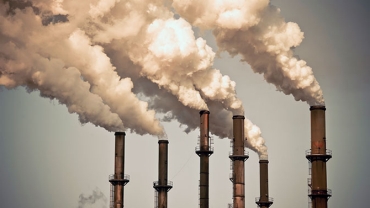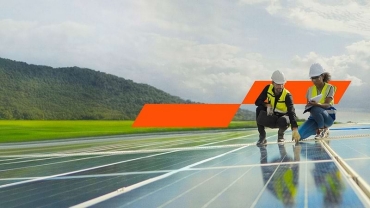
CBAM shaping up: EU border system to prevent carbon leakage
14/06/21
There have been talks about the European Union's carbon border adjustment mechanism (‘CBAM’) for quite a while now. Based on draft documents that were leaked recently, the envisaged design of the CBAM is now more clear. The CBAM is expected to be published mid July as part of the larger Green Deal legislative package, including an update of the EU ETS, a redrafted energy tax directive and the CBAM.
As a short background, the EU has set ambitious goals to become climate-neutral by 2050. In order to achieve climate neutrality, the EU has for example increased its carbon pricing efforts. An increased carbon price in the EU may result in companies transferring their (carbon intense) production to non-EU countries with lower carbon prices (i.e. carbon leakage). The CBAM aims to counteract this carbon leakage risk by putting a leveling carbon price on the import of certain goods from non-EU countries if certain conditions are met.

What does this mean for your company?
The CBAM will be a levy on the importation of certain goods (cement, electricity, fertilisers, iron, steel and aluminium) into the EU from 2023. The CBAM is designed to mirror the European Emissions Trading Scheme (‘EU ETS’). Based on EU ETS, allowances are granted for carbon emissions within the EU, caused by power generation, industry and aviation sectors within the EU. The mirroring with EU ETS means that the price of the CBAM certificates for the goods in scope would be aligned with the price of EU ETS allowances.
Next you find more details of the CBAM, based on the currently leaked draft document.
Legal framework
The CBAM is expected to be drafted as a regulation.This means that, other than a directive, it does not have to be implemented into domestic legislation of the EU Member States in order to have effect. Regulations have binding legal force in each EU Member State and enter into force on a set date in all EU Member States. For the CBAM this date is expected to be 1 January 2023.
Scope of CBAM
The CBAM is likely to be designed in a similar manner as the current EU ETS system. It is proposed that a so-called CBAM authority will be in charge. Under the CBAM, similar as under the EU ETS system, a certificate per tonne CO2 emitted during the production of the goods in scope (‘CBAM certificate’) has to be surrendered. At the moment it is expected that this mechanism will (only) cover the emissions on the imports of cement, electricity, fertilisers, iron, steel and aluminium. A suspension regime similar to the customs suspension regimes (for example bonded warehousing & inward processing) appears to be introduced as well.
From the leaked CBAM regulation, it follows that the emissions that are in scope are ‘direct emissions’ (i.e. emissions taking place as part of the production process of goods of which the producer has direct control, including emissions from the generation of heating and cooling acquired from third parties but consumed during the production process) and ‘indirect emissions’ (i.e. emissions from the generation of electricity which is consumed during the production process).
Import of the goods in scope can only be done by a declarant authorised by the CBAM authority. The definition of the declarant is linked to the definition used in the EU customs legislation. The authorised declarant has to declare the emissions on the imported good(s) subject to the CBAM before May 31st of the following calendar year and has to surrender CBAM certificates equal to the emitted tonne CO2 related to the good(s) imported. The CBAM certificates form their own pool of certificates, outside the EU ETS pool. The price of these CBAM certificates is connected to the existing EU ETS price and will be calculated as the average of the closing prices of all auctions of EU ETS allowances conducted in auctioning platforms during each calendar week. Authorised declarants which are non-compliant may face penalties.
Compliance requirements
The compliance under CBAM is highly technical and is expected to have a material administrative impact. As such, there will be a transitional period of three years following the entry into force of the CBAM Regulation. During the transitional period a simplified system for application of CBAM shall be in force, in order to reduce disruptive impacts on trade flows and to alleviate the initial administrative burden for declarants of importing goods in the EU. The idea is that under the transitional period, the customs authorities will levy the CBAM upon importation of the goods.
The ‘tax’ base for the CBAM with respect to the embedded CO2 emissions subject to CBAM will, during the transitional period, consist of a mathematical rule that uses default CO2 emission values per good. During the transitional period the mathematical approach is the main rule to calculate the CO2 content of the goods. These default values will be set at the average emissions for similar goods produced in the EU. If the actual emissions embedded in the imported goods are lower, the authorised declarant can apply for a reimbursement of the difference, based on the actual installation specific embedded emissions and the substantiation thereof.
After the transitional period the mechanism will be changed; as from then the CO2 emitted will be based on installation specific input. And only if that information will not be available, the embedded emissions will be calculated based on the default levels, which at that time will be set at emissions of the lowest 10 percent of the corresponding products in the EU.
An important final remark in respect of determining the CBAM due is that both in the transitional period as well as in the post-transitional period, an authorised declarant may in its declaration claim a reduction in the number of CBAM certificates to be surrendered corresponding to the carbon price paid in the country of origin of the goods (so where the actual emissions occurred).
Next steps
As mentioned above, this information is based on a recently leaked draft version of the CBAM regulation. However, in our view, irrespective of the final wording of the CBAM regulation, it is very likely that the CBAM will have a significant impact on a wide variety of internationally operating businesses.
Hence, important next steps for companies importing (or relying on the importation of) any of the goods in scope of CBAM (or expected to become in scope of CBAM) is to understand the potential impact of the costs of CBAM on their supply chain and ultimately on the costs of produced goods. It is furthermore essential to make sure the correct formalities are taken into account to be able to arrange for a smooth import of goods at the EU border complying with the CBAM to avoid potential penalties.
Please feel free to reach out, if you have any questions on the CBAM or if you wish to discuss what the CBAM will mean for your organisation.
Contact us

Energy - Utilities - Resources Industry, Tax, Partner, PwC Netherlands
Tel: +31 (0)65 154 18 97

Partner, Energy transition and sustainable energy, PwC Netherlands
Tel: +31 (0)65 160 08 61

Juliette Marsé
Director (Tax) - Energy, Utilities & Resources, PwC Netherlands
Tel: +31 (0)63 419 61 08

Mohammed Azouagh
Senior Manager - Tax, Sustainability and Incentives, PwC Netherlands
Tel: +31 (0)62 380 36 54

















